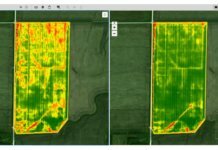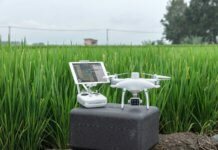 Kansas State University (KSU) is leading an international project that is looking at unmanned aerial systems (UAS) as a quick and efficient method to detect pest insects and diseases in food crops before outbreaks happen.
Kansas State University (KSU) is leading an international project that is looking at unmanned aerial systems (UAS) as a quick and efficient method to detect pest insects and diseases in food crops before outbreaks happen.
Brian McCornack, associate professor of entomology, is the U.S. principal investigator on the $1.74 million, three-year project, ‘Optimizing Surveillance Protocols Using Unmanned Aerial Systems.’
KSU’s Manhattan and Salina campuses are teaming up with Australia's Queensland University of Technology; the Victorian Department of Environment and Primary Industries; and the Queensland Department of Agriculture, Fisheries and Forestry.
KSU researchers will use UAS to repeatedly monitor Federal Aviation Administration (FAA)-sanctioned fields in key Kansas counties over the wheat-growing season. Images will be compared and used to identify field sections that have abnormalities, possibly caused by key insect pests or diseases. Researchers in Australia are conducting complementary flights to collect supporting data.
According to KSU, the team's findings may lead to new pest-management strategies that use UAS and other imaging technologies for detecting invasive pests in horticulture and grain industries. The project will initially target the Russian wheat aphid and wheat stripe rust, also commonly referred to as ‘yellow rust.’
According to McCornack, using UAS in this manner removes the current needle-in-the-haystack approach to monitoring crop plants. In addition to testing for accuracy, researchers will look at how to refine the aerial images captured by the UAS in order to provide landowners with the most usable data. For example, this could include comparing images taken at varying heights and resolutions – from satellite images to pictures taken on the ground with a mobile device.
‘It's important that we're able to detect the next invasive pest,’ adds McCornack. ‘Using this technology is not a guarantee, but it can help us understand how to quickly manage new pests that do establish.’
The project was recently funded by the Plant Biosecurity Cooperative Research Centre, a consortium of several of Australia's and New Zealand's governmental research institutions and universities. KSU is the center's only U.S. partner.









